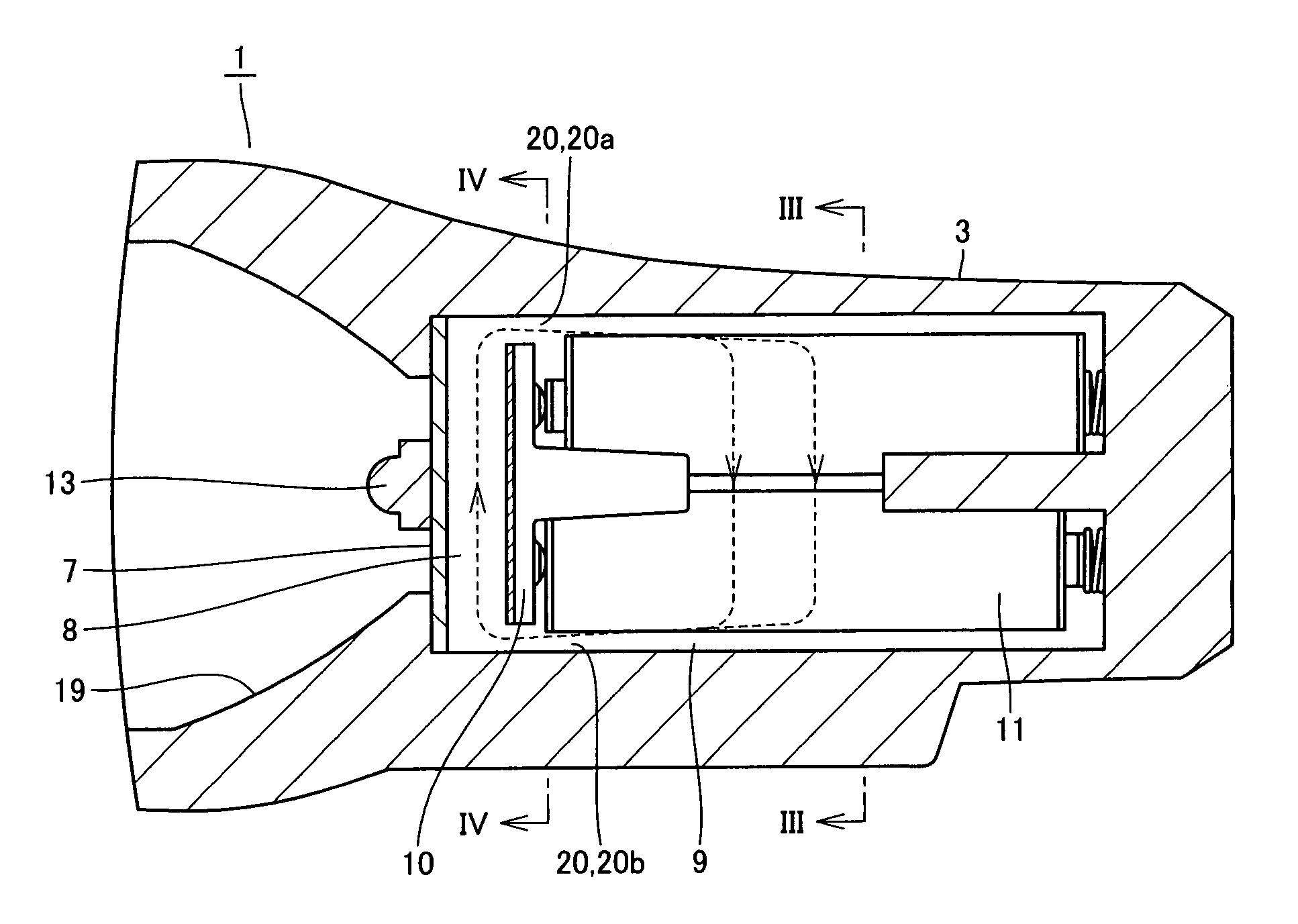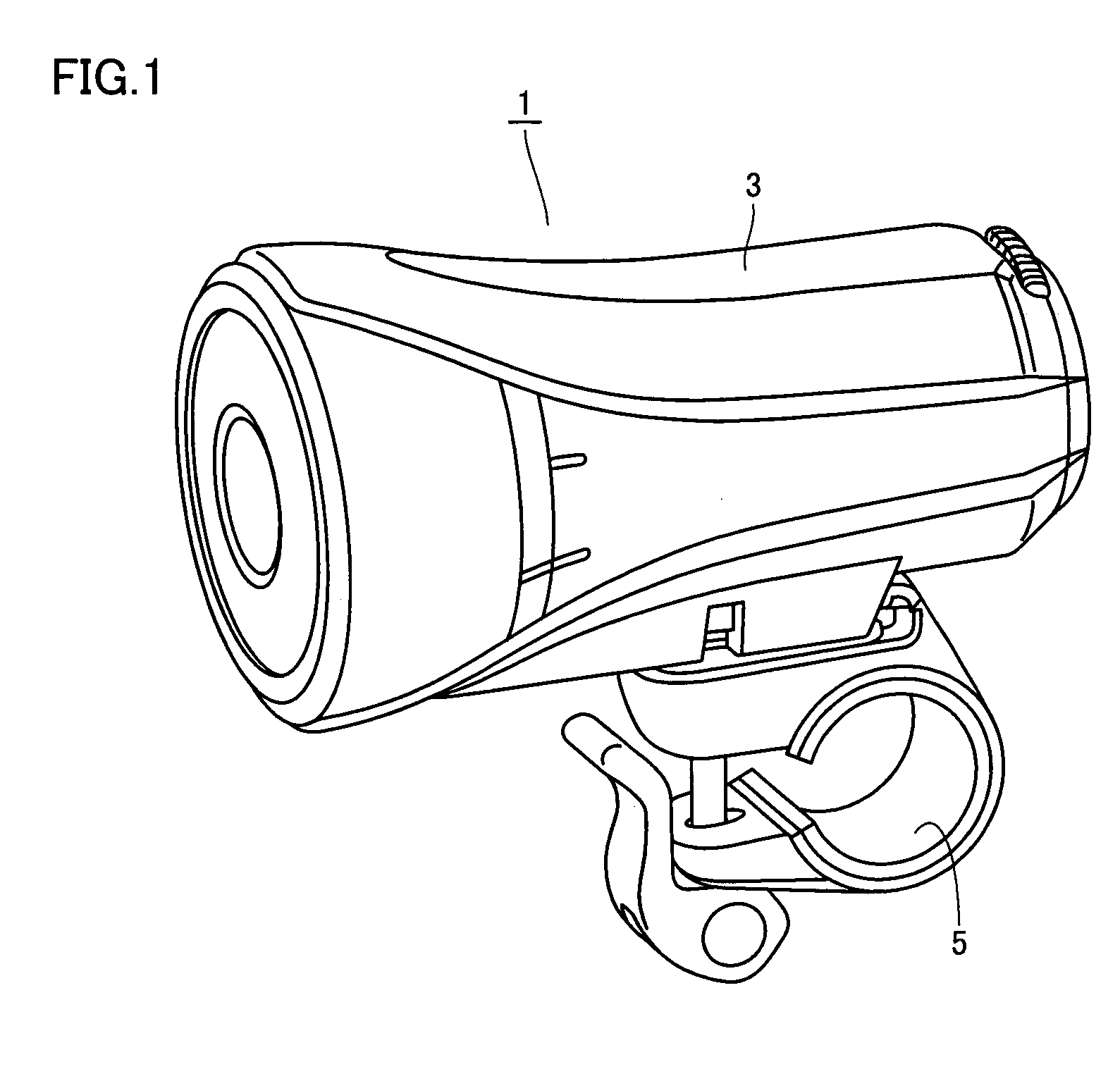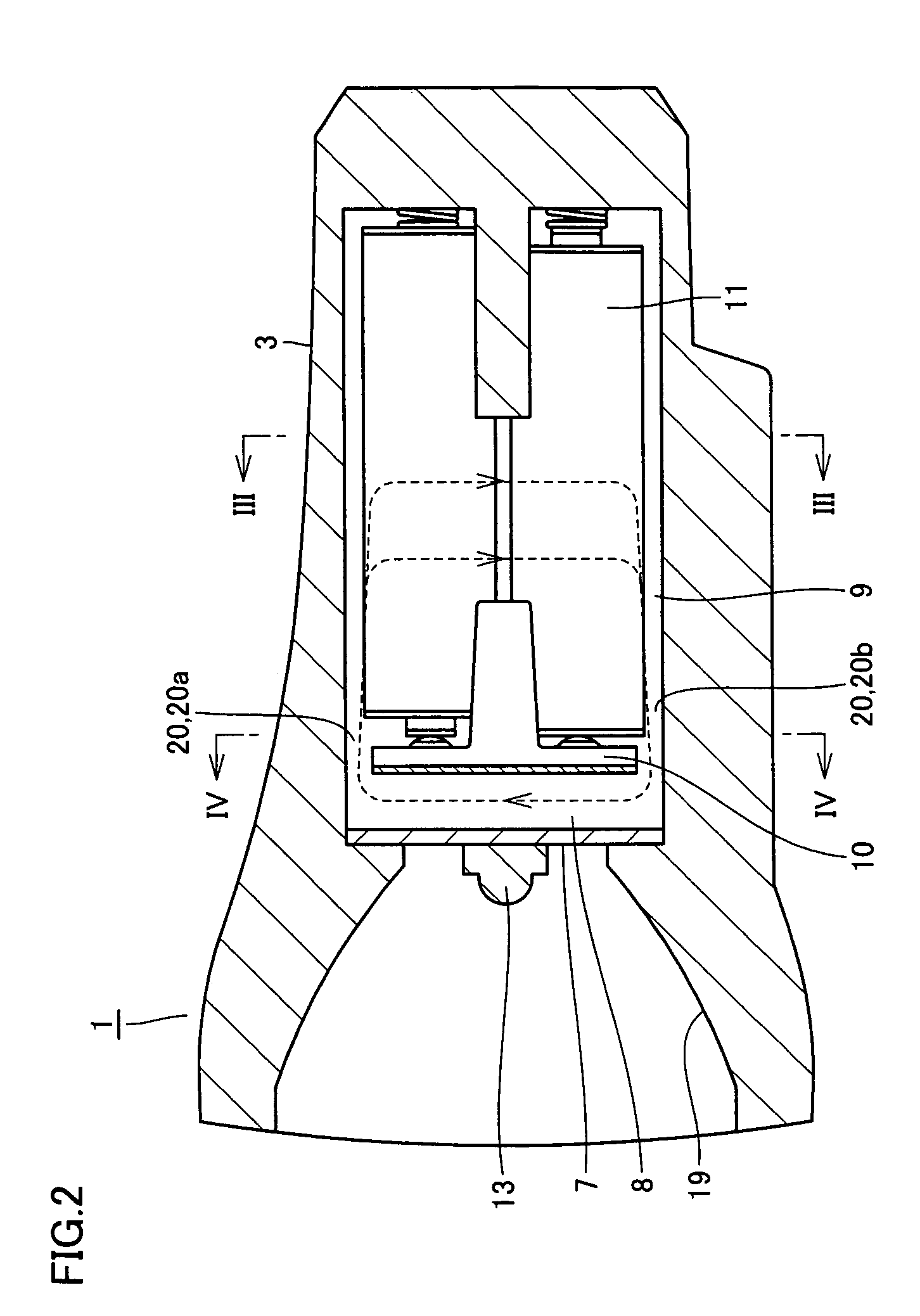Headlamp
a technology for headlamps and diodes, applied in the field of headlamps, can solve the problems of increasing the temperature of the substrate portion, shortening the life reducing the luminous efficiency of the light-emitting diodes, so as to prevent heat generation
- Summary
- Abstract
- Description
- Claims
- Application Information
AI Technical Summary
Benefits of technology
Problems solved by technology
Method used
Image
Examples
first embodiment
[0032]As an example of the headlamp employing a light-emitting diode according to a first embodiment of the present invention, a headlamp mounted to a bicycle is explained. As shown in FIG. 1, the headlamp 1 has a casing 3 for accommodating a light source, a battery and others to protect them against weather. Casing 3 is provided with an attachment 5 for attaching headlamp 1 to, e.g., a handlebar (not shown) of a bicycle.
[0033]As shown in FIG. 2, provided within casing 3 of headlamp 1 are a substrate portion 7 to which a light-emitting diode 13 as the light source is mounted, and a battery case 9 for housing a battery 11 for supplying necessary power to light-emitting diode 13. A reflecting mirror 19 is provided on the same side as light-emitting diode 13, for directing the light emitted from light-emitting diode 13 frontward.
[0034]Substrate portion 7, mounted with light-emitting diode 13 and serving as a heat sink, is arranged spaced apart from a partition 10 positioned on the fron...
second embodiment
[0042]A headlamp employing a light-emitting diode according to a second embodiment of the present invention is now described. In the present embodiment, as shown in FIG. 7, a substrate portion 7 to which a light-emitting diode 13 is mounted is formed only of an aluminum plate 7a. Light-emitting diode 13 is mounted to a holder 15 that is provided directly on a surface of aluminum plate 7a.
[0043]Further, as shown in FIG. 8, substrate portion 7 is provided with a through hole 16 penetrating therethrough. A hollow rivet 17 as a prescribed rivet is mounted to through hole 16.
[0044]As shown in FIGS. 8 and 9, rivet 17 has one end connected to a terminal of light-emitting diode 13, and another end connected to a terminal 12 provided on partition 10 of battery case 9 for providing power.
[0045]As described above, in the headlamp of the present embodiment, substrate portion 7 formed only of aluminum plate 7a is employed for substrate portion 7 to which light-emitting diode 13 is mounted. As s...
PUM
 Login to View More
Login to View More Abstract
Description
Claims
Application Information
 Login to View More
Login to View More - R&D
- Intellectual Property
- Life Sciences
- Materials
- Tech Scout
- Unparalleled Data Quality
- Higher Quality Content
- 60% Fewer Hallucinations
Browse by: Latest US Patents, China's latest patents, Technical Efficacy Thesaurus, Application Domain, Technology Topic, Popular Technical Reports.
© 2025 PatSnap. All rights reserved.Legal|Privacy policy|Modern Slavery Act Transparency Statement|Sitemap|About US| Contact US: help@patsnap.com



